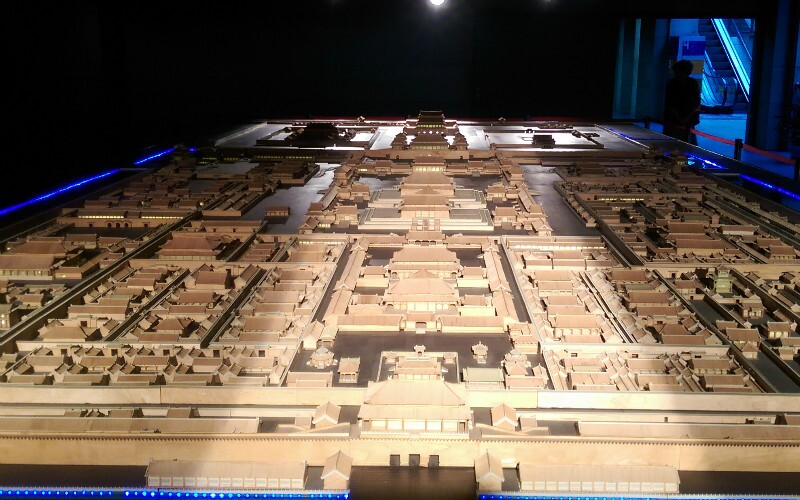There is a 3,200 square feet detailed model of Beijing with English speaking guides and a theater showing two short films about the "Eternal City" or the history of construction of Beijing and about the "New Beijing" or Beijing's present and future state in Beijing Planning Exhibition Hall as well as two bronze models of the natural geography of Beijing and of Beijing in 1949. There is also a museum room with artifacts and maps in the hall.
Overview
Beijing is currently experiencing a population explosion. It is now a city of about 20,000,000 people, and the population keeps rising from natural births and immigration. Preparing for the 2008 Summer Olympics gave Beijing a major facelift, but behind hastily constructed walls and bill boards, much of the city's population live in tiny rooms reminiscent of 50 years ago. Constructing modern housing for all the people and building modern infrastructure requires urban planning. To see China's plans for its capital city and to learn about the urban history of Beijing from the time it first became a capital city of an empire, a good place to go is to the Beijing Planning Exhibition Hall that is strategically located in the middle of Beijing's most famous Qing Dynasty-era architecture.
Tourists seeing what remains of Beijing's imperial architecture at the Temple of Heaven and the Palace Museum may also stop in it for a quick view of what Beijing might look like in the future. There is a detailed and very big scale model showing the Beijing planners' plans. Due to the construction of high office towers, the Olympic Water Cube, and the Bird's Nest, Beijing is now known for its monumental architecture in novel shapes. But by visiting the exhibition hall, you can see what the city might look like in the near future by watching the media in the center's theater and seeing the big scale model display of what the city might look like in 2010.
You can also learn about the city's past. Beginning with the Liao Empire (916–1125 AD) which made the Beijing area the site of one of its capital cities, the area of Beijing became increasingly important as an imperial capital of several empires. The Manchus built some huge architecture for the imperial family of the Qing Empire. In 1949, Beijing again became the capital city. You can see a bronze model of Beijing as it looked in 1949. There are also historical exhibits, maps and displays that instruct on the history of Beijing.
- 5-Day Beijing Family Tour
- 6-Day Beijing Chinese New Year Tour
- One Day Beijing Highlights Private Tour
Features
This is a four-story building meant for tourists about Beijing's urban history and their plans for the future that is smack dab in the middle of China's government area and historical sites. It is like a museum. The highlight of a visit to the Beijing Planning Exhibition Hall is the extraordinarily detailed scale model of the city that projects what China's capital will look like in the year 2020. English-speaking guides dressed in scarlet-and-black silk offer assistance to foreign tourists as pulsating lights flash over the exuberant skyline. The government-operated museum is housed in a four-story building the size of a major U.S. department store, and the model covers some 3,200 square feet. So while touring the area around Tiananmen, if you want to get a quick overall picture about what Beijing is like and might be like in the future, you can visit the Beijing Planning Exhibition Hall.
Nearby Attractions

What is neat about a visit to this facility to see a picture of modern Beijing is that it is near the Temple of Heaven and Tiananmen. It is in the middle of China's government area where historic architecture sits amid new construction. The Palace Museum is two kilometers north, and the Museum of Natural History is two kilometers south. Tian Tan or the Temple of Heaven is next to the Museum of Natural History and is just to the east of it. Just to the west of the Palace Museum is Beihai Park with a little lake.
Transportation
- Address: 20 E Qianmen Avenue. 北京城市规划馆--崇文区前门东大街20号. You can show a taxi driver this address.
- Metro: It is about 400 meters east of the Qianmen Station of Line 2.
- Bus: Buses such as No. 5, 9, 20, 44, 120, and 819 go there.
Important Information
- Open: 9 am to 5 pm. Closed Mondays.
- Tickets: About 30 RMB or 5.15 USD. Tickets to the theater presentation inside cost 10 RMB or about 1.5 USD.

